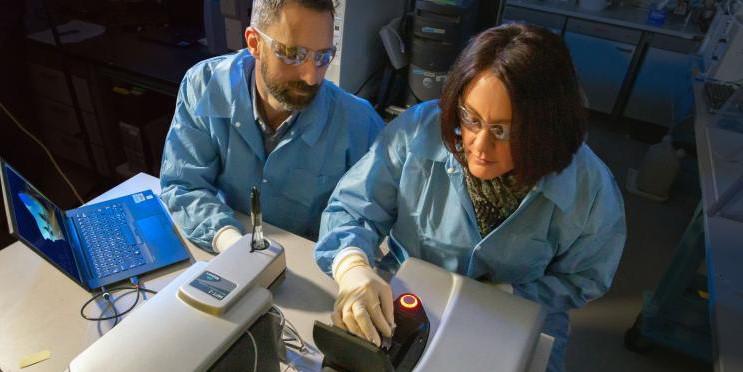Researchers Aim to Defend Troops from Biothreats
Scientists from Lawrence Livermore National Laboratory (LLNL) and three other institutions are seeking to develop a multipathogen vaccine that will protect against three bacterial biothreat pathogens that cause plague, rabbit fever and melioidosis, LLNL announced today.
Led by the LLNL, the team includes disease experts from the University of New Mexico Health Sciences Center; the University of Nevada, Reno School of Medicine; and the U.S. Army Medical Research Institute of Infectious Diseases. The researchers, who will collaborate under a five-year, $10 million grant from the Defense Threat Reduction Agency, are aiming to develop a single vaccine that will protect against tularemia, melioidosis and plague.
LLNL scientists have demonstrated the ability of a subunit vaccine, incorporating different antigens from the Francisella tularensis bacterium into a single particle, to protect against inhalation of high doses of the bacteria, which causes the disease tularemia, also known as rabbit fever. Their collaborators at the University of Nevada and the Army Medical Research Institute of Infectious Diseases have been testing candidate subunit vaccines for melioidosis and plague respectively, and their data suggests that those subunit vaccines could be effective.
Kris Kulp, leader of the lab’s Biosciences and Biotechnology Division, noted that the three-way vaccine, if successful, will protect against several high-priority pathogens in a single dose, greatly facilitating the defense of U.S. troops against biothreats.
“Not only will a simplified immunization regime be cost-effective, it also will enable warfighters to be fully vaccinated more quickly. This project builds on LLNL expertise using nanoparticle technology to deliver vaccines against single pathogens and takes them to the next step by adding antigens that will protect against multiple pathogens simultaneously,” Kulp said.
The team’s scientists will build on a nanotechnology—called nanolipoprotein particles (NLPs)—that was developed at LLNL for delivering vaccines and drugs inside the human body.
NLPs are water-soluble molecules that are 6 to 30 billionths of a meter in size and resemble HDL particles, which are associated with playing a role in regulating the human body’s good cholesterol. LLNL scientists have worked on this nanotechnology, also known as nanodisc, since 2005.
Using the NLPs as a delivery platform, the antigens for the three disease-causing bacteria could be co-delivered with an adjuvant molecule, which stimulates the immune response against the antigens.
In addition to the four institutions, a Bay Area vaccine company—San Carlos-based Vaxcyte Inc.—will produce Yersina pestis and F. tularensis antigens in a manner that is scalable and amenable to production in a “good manufacturing practices” environment.





Comments